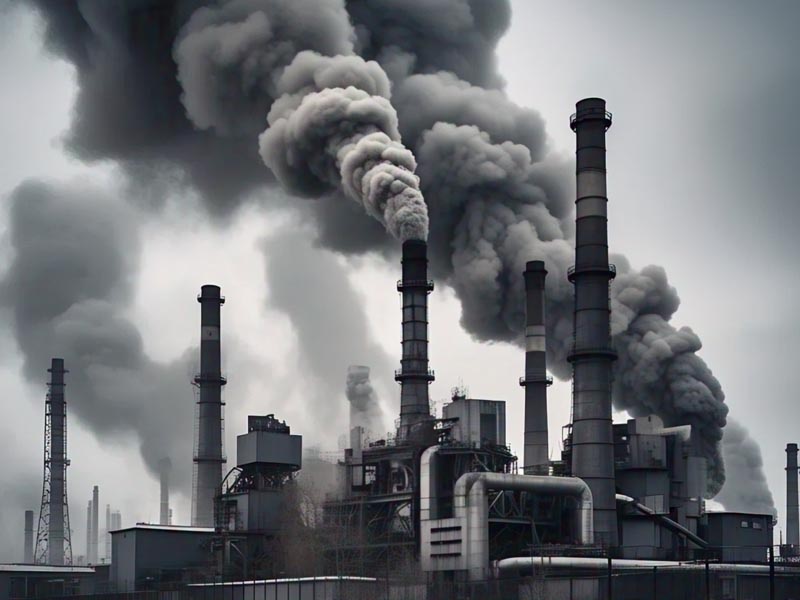
Resilienceapac – Greenhouse gas emissions are a pressing global issue, with global greenhouse gases driving climate change and environmental degradation. These emissions come from various sources, with carbon dioxide (CO2), methane (CH4), nitrous oxide (N2O), and fluorinated gases (F-gases) being the most significant contributors. The rising levels of these gases in the atmosphere are accelerating global warming, leading to extreme weather conditions, rising sea levels, and threats to biodiversity.
The largest contributor to global greenhouse gas emissions is carbon dioxide (CO2), primarily released through the burning of fossil fuels such as coal, oil, and gas. Additionally, land-use changes such as deforestation and agricultural expansion release significant amounts of CO2 while reducing the planet’s ability to absorb it. However, proper land management strategies, such as reforestation and soil restoration, can help mitigate these emissions.
Methane (CH4) is another potent greenhouse gas, with its emissions largely originating from agricultural activities, particularly livestock farming and rice cultivation. Other sources include waste management practices, energy production, and biomass burning. Although methane has a shorter atmospheric lifespan than CO2, its warming potential is much greater.
“Authorities Probe Will’s Actions in Ongoing Investigation”
Nitrous oxide (N2O) emissions mainly stem from agricultural practices, especially from synthetic fertilizers that release nitrogen into the atmosphere. Additionally, industrial chemical production and fossil fuel combustion contribute to the increase in N2O levels, further exacerbating climate change.
Fluorinated gases (F-gases), which include hydrofluorocarbons (HFCs), perfluorocarbons (PFCs), and sulfur hexafluoride (SF6). Are primarily used in industrial processes and refrigeration. These gases, though emitted in smaller quantities, have extremely high global warming potential and can remain in the atmosphere for decades or even centuries.
The fight against global greenhouse gas emissions requires a multi-faceted approach. Transitioning to renewable energy sources, such as solar and wind power, can significantly reduce CO2 emissions from fossil fuel combustion. Improved agricultural techniques, such as optimizing fertilizer use and implementing sustainable livestock management, can lower methane and nitrous oxide emissions.
Technological advancements also play a crucial role in reducing industrial emissions. Including the development of energy-efficient cooling systems and alternative refrigerants to replace harmful fluorinated gases. Additionally, afforestation and reforestation efforts can help absorb excess CO2 from the atmosphere.
Government policies and international agreements, such as the Paris Agreement. Are essential in setting emission reduction targets and encouraging global cooperation. Meanwhile, individuals can contribute by adopting sustainable practices like reducing energy consumption, minimizing waste, and supporting eco-friendly businesses.
By taking decisive action at every level, the world can curb greenhouse gas emissions and mitigate the effects of climate change, ensuring a healthier planet for future generations.
“Remove ODOL Trucks: A Mandatory Step for Safety”
Resilienceapac - The modern world is no longer built on intuition but on data-driven precision. Industries today are embracing digital…
Resilienceapac - UNIDO and Lenovo have joined forces to accelerate the adoption of circular economy practices worldwide. The partnership focuses…
Resilienceapac - Indonesia Faces Public alarm after more than 5,000 schoolchildren reportedly fell ill due to suspected food poisoning linked…
Resilienceapac - Super Typhoon Ragasa struck Asia with devastating force, leaving destruction that underscores the region’s growing exposure to extreme…
Resilienceapac - Yann Schuermans left AB InBev, one of the world’s largest beverage companies, to pursue a bold new vision…
Resilienceapac - L’Oréal Reveals Big Bang finalists for its highly anticipated Beauty Tech program in Singapore, spotlighting ten innovative startups…